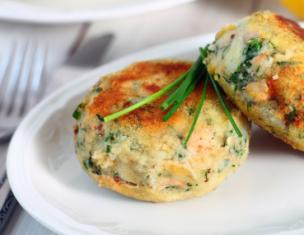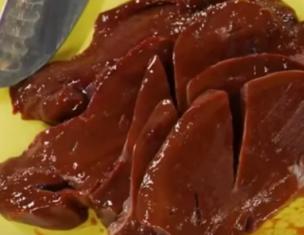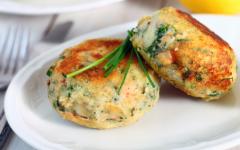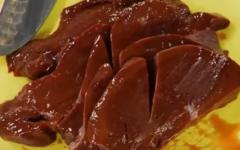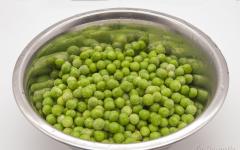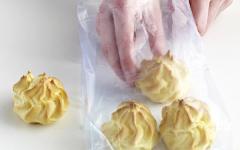Vinegar concentration calculator
What's in the recipe:
Why use the vinegar concentration calculator
This online calculator allows you to calculate the amount of vinegar, if the recipe specifies one concentration ("strength") of vinegar, and in the store (or your home), there is vinegar of another concentration. Or if you want to replace the vinegar essence indicated in the recipe with environmentally friendly and useful natural vinegar.
Suppose the recipe says to use 15 ml of 70% acetic essence and 2 liters of water, and you want to use your 5% apple cider vinegar. It is intuitively clear that, since the concentration of apple cider vinegar is 14 times less than in essence (because 70 = 5x14), it will take about 14 times more (15x14 = 210 ml, ie, slightly more than a glass) , while reducing the amount of water intended to dilute the essence of approximately a glass (because along with the vinegar, you add an additional glass of water to the marinade). But this is only an approximate estimate, and for an accurate calculation it is necessary to take into account the difference in density of vinegar solutions from the density of water and the dependence of the density of solutions on concentration. Also, the amount of water available in the original solution (specified in the recipe) and in the replacement solution must be accurately accounted for ..
How to use the vinegar calculator
Input of calculated data and viewing of results
To calculate, you need to enter the following data:
- the concentration of the first solution (specified in the recipe, you want to replace it with another solution) is indicated in percentages. Concentration should be more than 0% and not more than 100%.
- amount of first solution (it is indicated in units - milliliters, grams, liters, kilograms, teaspoons, tablespoons, glasses indicated in the list on the right). A teaspoon is considered equal to 5 milliliters, a tablespoon is 15 milliliters, a glass is 200 milliliters. Note that in the Australian culinary recipes, a teaspoon is considered equal to not 15, but 20 milliliters. The number must be a positive number.
- the concentration of the second solution (replacing the first solution, indicated in percentage, should be more than 0% and not more than 100%
When you enter incorrect data, the fields are colored red and a corresponding message is issued. It is preferable to use the symbol "." For division of the whole and fractional part. (point), but you can use a comma (symbol ","). Repeated input of a decimal separator or input of any non-numeric character (letter, space) stops the input of the number (in this case the previously entered digits will be taken into account). For example, the entered data "5.5abc" the calculator will understand as the number "five and a half". If the entered data can not be recognized as a number at all, the calculator will ask you to enter the correct data.
The calculation will be made in about one second and the results will be displayed in units that you can select in the lists to the right of the results. If the concentration of the first and second solutions is different, then you need to change the amount of water compared to the one specified in the recipe. So, in 100 gr. 70% of the essence contains 70 gr. pure acetic acid (CH3COOH) and 30 grams. water (H2O), and in 100 gr. 5% vinegar - 5 gr. acetic acid and 95 g. water. Therefore, when you replace the essence with vinegar, you need to reduce the amount of water indicated in the recipe. Conversely, if you replace vinegar with essence, you must add water in such a way that the content of acetic acid and water does not change. More details about the calculation method can be found here.
If you specify the same concentration of vinegar specified in the recipe and used for replacement, our calculator can be used to recalculate the amount of vinegar indicated in different units (taking into account the densities of aqueous solutions of acetic acid). So, the volume of 100 gr. 80% of the acetic essence will be about 93 ml (because its density is 1070 g / l), and ten tablespoons of 6% vinegar weigh 151 grams. When you replace the concentrated vinegar (essence) with a dilute, the calculator will indicate the need to reduce the water, whereas in the original culinary recipe, the presence of water may not be provided at all, or provided in an amount less than that displayed in the calculator's answer. In such situations, it is necessary either to reduce the amount of moisture given, for example, by vegetable juice, or not being able to reduce the amount of water, just accept that the marinade obtained with such a replacement will contain more liquid than prescribed in the original recipe.
Illustration: How to change the unit of measurement
When using the calculator, you can pay attention that sometimes the amount of volume of vinegar and water from the recipe does not match the amount of the volume of the replacement vinegar and water. This is not an error, because when mixing two liquids, their total volume can vary due to the fact that the density of the solution depends on the concentration. Density of solutions also depends on temperature a little, our calculator calculates under the assumption that the solution temperature is 20 degrees Celsius. This dependence of the density of solutions on temperature almost does not affect the accuracy of calculations for the needs of home preservation.
In the recipes are often found solutions of acetic acid of different concentrations: 70% (acetic essence), 30%, 9% (table) and 5%.
Recently, natural vinegars have become very popular: wine, apple, balsamic, rice, malt. They have a richer taste and nutritional value, than usual spirit vinegar. Their concentration may fluctuate, usually 3-6% vinegars.
Wandering through the spaces recipes, I often puzzled over the question of using the right amount of vinegar of the right concentration when preparing the next dish. After all, in one recipe indicated: 5%, in the second - 6%, in the third - 9%, and there and at all acetic acid ... I was saved, as usual, the Internet. The results of my searches, I place here - maybe, somebody else will be useful in the season of blanks!
So, if you do not have the vinegar of the concentration that is indicated in the recipe, but there is another vinegar, use this table for recalculation. Below are specific examples explaining how to use the table.
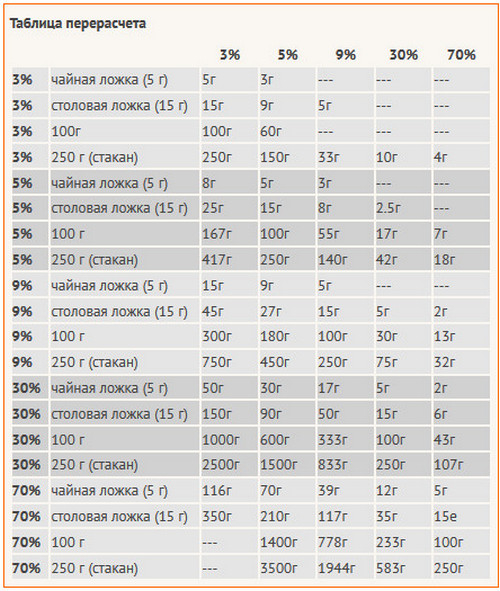
Here are two specific examples of the allocation:
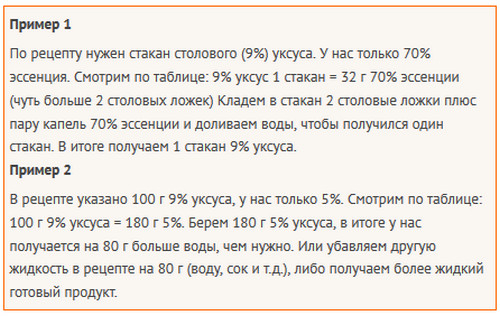
Let's derive the formula for the recalculation: The required amount (in grams) = the initial quantity in grams × the initial concentration ÷ at the desired concentration. For convenience, we use the concentration in integers (9 instead of 0.09 or 70 instead of 0.7)
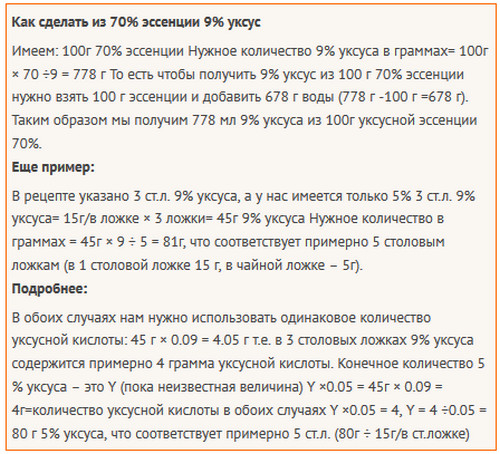
In many recipes, you can simply replace 3 tablespoons. 9% by 5 items of l. 5%, if the amount of acetic acid is important, but not liquid (for example in a salad). If it is important to use an equal amount of liquid (for example in marinades), then you need to add or subtract water. For example, if we change 9% to 5% vinegar, we need to add 2 tablespoons. water: 5 tbsp 5% vinegar = 3 tbsp. 9% vinegar + 2 tablespoons (water). Or vice versa - if we change the weaker vinegar (5%) to a stronger (9%), then you need to reduce 2 tablespoons. water (if possible by prescription).
The following way of recalculation
1. Translation formulas
K = C exx / C mp
V claim = K * V out
Where K is a coefficient,
V lawsuit - the required amount of vinegar,
V out - the initial amount of vinegar,
C mp is the required concentration,
From the initial concentration.
Example
How to dilute 70% vinegar to 3%?
K = 70/3 = 23
Thus, in order to make 3% of 70% vinegar, one part of the vinegar should be diluted with 22 parts of water.
Let us change the problem.
We do not have abstract parts, but specific milliliters.
It is necessary to transfer 5 ml of 70% vinegar in 3%.
We take the obtained coefficient 23 and multiply it by 5.
We get 23 * 5 = 115 ml.
5 ml 70% = 115 ml 3%
2. Translation table.
|
Required concentration |
Initial concentration 80% |
Initial concentration 70% |
Initial concentration 30% |
| 3% |
26,5 (1 part 80% + 25.5 parts water) |
23 (1 part 70% + 22 parts water) |
10 (1 part 30% + 9 parts water) |
| 5% |
16 (1 hour 80% + 15 hours water) |
14 (1 hour 70% + 13 hours water) |
6 (1 hour 30% + 5 hours water) |
| 6% |
13 (1 hour 80% + 12 hours water) |
11,5 (1 hour 70% + 10.5 hours water) |
5 (1 hour 30% + 4 hours water) |
| 9% |
9 (1 hour 80% + 8 hours water) |
8 (1 hour 70% + 7 hours water) |
3 (1 hour 30% + 2 hours water) |
| 10% |
8 (1 hour 80% + 7 hours water) |
7 (1 hour 70% + 6 hours water) |
4 (1 hour 30% + 2.5 hours water) |
| 30% |
2,5 (1 hour 80% + 1.5 hours water) |
2 (1 hour 70% + 1 hour of water) |
— |
Examples (how to use the table)
1. If the recipe specifies 1 hour spoon 70% vinegar, and you only have 6%.
So you need to take 11.5 h spoons of your 6% vinegar.
2. If you have 70% acetic acid, and you need to get 6% vinegar.
Take 1 part acid and add to it 10.5 parts water.
Suppose the recipe says to use 15 ml of 70% acetic essence and 2 liters of water, and you want to use your 5% apple cider vinegar. It is clear that, since the concentration of apple cider vinegar is 14 times less than in essence (70 = 5x14), it will take about 14 times more (15x14 = 210 ml, ie, slightly more than a glass), while reducing the amount of water intended to dilute the essence of approximately a glass (because along with the vinegar you add an additional glass of water to the marinade).
In recipes, especially when canning, most often indicated 9% vinegar.
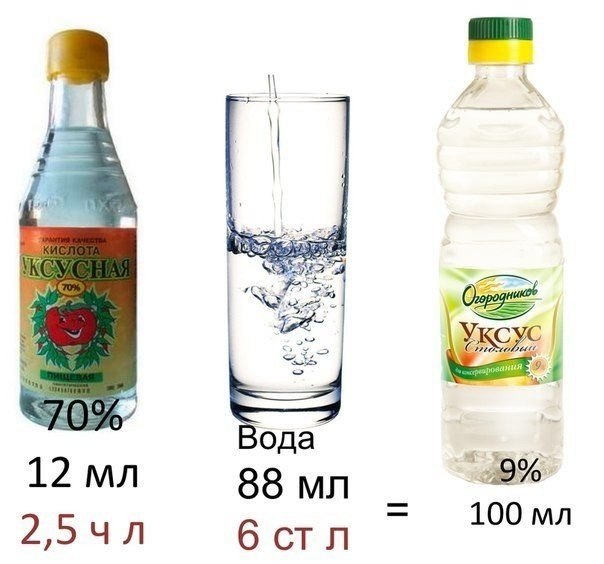
We take 12 ml acetic acid and simply add water to 100 ml. It turns out 100 ml 9% vinegar
To obtain 100 ml vinegar the required percentage should be taken:
- 36 ml essences (70%) to obtain 25%
(i.e. add to 36 ml of the available 70% essence of 64 ml of distilled water - we get 100 ml of 25% vinegar)
- 71 ml essences to obtain 50% + add 29 ml of water
- 14 ml essences to obtain 10% + add 86 ml of water.
Note!
Be careful when working with acetic acid! If acid gets on your skin, immediately flush it with plenty of cool water.
Vinegar vapors are also poisonous, therefore, in order to avoid burns of the mucous membrane of the respiratory tract, it is forbidden to inhale them.
On the materials of allrecipes.ru, www.good-cook.ru, forum.say7.info
The end of summer and early autumn for all the hostesses are a troublesome time. This is the time of harvesting for the winter - pickling, canning, cooking. In general, cares - full of mouth. And often this happens when, in the middle of the canning process, it suddenly becomes clear that there is not a drop of vinegar in the house. No problem, for this case there is a more resourceful neighbor who will always come to the rescue. Only here an ill luck - at the neighbor there was an acetic 70 percent essence, and it for preservation will not approach. The only way out is to dilute. Today, we will tell you how to dilute acetic acid 70 to 9 percent and not to disrupt stockpiling.
Product types
The simplest answer to the question: "Where does vinegar come from?" - "From the store." But let's expand the scope of our horizons a little today. Each of us can recall the case when an open bottle of wine or beer, left unopened, after a while sour. In the process of souring or fermentation, acetic acid is formed.
By fermentation, only natural food vinegar is obtained. To do this, fermented alcohol-containing liquids are distilled and a concentrated acetic essence is obtained, which subsequently falls on store shelves.
How to dilute the vinegar essence to 9% vinegar, we'll talk later, and now a little bit about the types of this product. Today for culinary purposes use several types of food vinegar:
- Alcohol is a natural product without any taste. It is prepared from an aqueous solution of ethyl alcohol.
- Rice is a product based on fermented rice or rice wine. It is indispensable as a flavoring seasoning.
- Balsamic - a natural product of a sweetish smell, dark color with a thick consistency.
- Fruit is an excellent seasoning for salads from vegetables and dumplings. Apple vinegar has gained its popularity as a curative.
- Flavored - a product obtained on the basis of alcohol vinegar by adding spicy and fragrant herbs.
- Malt - produced on the basis of barley malt. It accentuates the taste of ready meals and gives them astringency.
- Sour - is made on the basis of wine wort from Muscatel or Palomino grape varieties.
- Synthetic - it is extracted from sawdust or in the production of mineral fertilizers from natural gas. It has a pronounced chemical taste and smell. It is characterized by low-cost production. On the shelves of shops gets with the inscription "Table". The main difference from natural vinegar is an increased content of toxic and carcinogenic substances, but it captivates with its cheapness.
Read also:
How to dilute acetic acid 70% to 9%?
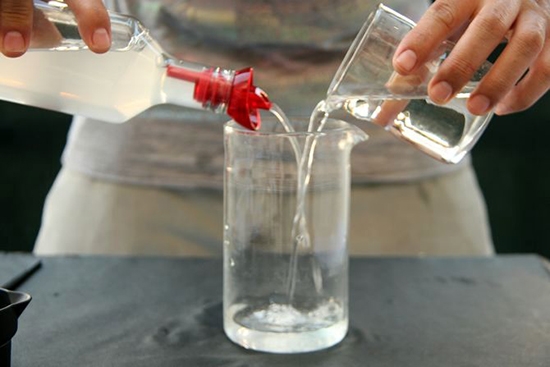
Vinegar can be used both as a separate seasoning for prepared dishes, and as a component in sauces, marinades, salad dressings. Due to its antiseptic properties, it is indispensable for home canning.
And now, finally, it's time to open the secret, how to dilute 70 percent vinegar to 9 percent. Actually, there is no secret here: we need only water, little mathematical skills and accuracy.
The process of breeding
To obtain the desired concentration of vinegar, you should find the volume of water and essences needed for the solution:
Ve = Kp x Vp / Ke:
- Ve is the required volume of the essence, ml;
- Vp - required volume of solution, ml;
- Kp - the required concentration of the solution,%;
- Кэ - concentration of essence,%.
- VB is the required volume of water.
For example, we have 70% acetic essence, but you need to get 500 ml of a 9% vinegar solution:
Ve = 9 x 500/70 = 64.3 ml, VB = 500 - 64.3 = 435.7 ml, that is, take 64.3 ml of essence and mix with 435.7 ml of water. All elementary!
Using a slightly deeper knowledge of mathematics, we can derive a formula that allows us to find out the volume of a solution of the required concentration from the initial volume of the essence: Vp = Ke x Ve / Kr. So, in the presence of 0.5 liters of 70% of the essence, we can get almost 4 liters of 9% vinegar, while it is easy to guess, we will spend 3.5 liters of water.

And yet, to ensure that you do not get lost in these calculations, we suggest using the finished table how to dilute acetic acid 70 to 9 vinegar.
| Required concentration of vinegar,% | The initial concentration of the essence is 70% |
| 30 |
(ratio - 1 part of the essence in n parts of water) |
| 10 | 1:6 |
| 9 | 1:7 |
| 8 | 1:8 |
| 7 | 1:9 |
| 6 | 1:11 |
| 5 | 1:13 |
| 4 | 1:17 |
| 3 | 1:22,5 |
Precautionary measures
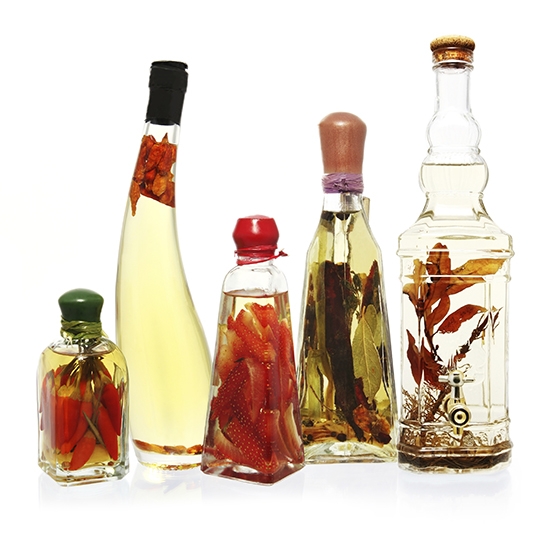
Incorrect or careless use of acetic acid can cause poisoning or burns of internal organs. And, depending on the degree of severity, it can even lead to death. To avoid such troubles, we recommend that you observe the following precautions:
- Acquire vinegar in official trading establishments. The label must contain information about the product and its concentration.
- Dilute vinegar, pour into a separate container and make a note on the content and its concentration.
- To prevent acetic acid from entering the body, do not try to taste the product right from the bottle.
- Dilute the vinegar essence in a well-ventilated area. Avoid prolonged inhalation of vinegar vapors.
- In case of poisoning with acetic acid, immediately call for an ambulance and take measures to wash the stomach, in no case do not use drugs that cause vomiting.
- When irritating the upper respiratory tract, rinsing cold water and inhalation with a solution of soda food.
- If acetic acid suddenly gets into your eyes, immediately rinse them with cold water, then immerse the solution of novocaine.
- In case of contact with skin, wash it thoroughly with soap and water.
- Keep vinegar out of the reach of children.
How to make 6% vinegar at home? This question is of interest to many housewives, who decided to cook some delicious and lush pastries or prepare spicy marinades for the winter. After all, this ingredient is actively used to extinguish baking soda, the acuteness of home-made pickles, as well as various salads and so on.
What types of vinegar are there?
As for the synthetic product, it is produced by chemical processes. As the main component of this vinegar is acid.
Of course, when cooking, it is better to use a natural ingredient. But for domestic needs (disinfection, cleaning of various devices, removal of stains, etc.), you can also use synthetic.
6% vinegar: what is it used for?
On how to make 6% vinegar, we'll tell you a little bit lower. Now I want to tell you about what this product might be useful for.
Most often such a solution of acetic essence is used in cooking. They are extinguished baking soda during the preparation of various homemade cakes, add to marinades and others so that they retain their taste qualities longer and also often use them to create salads (for example, carrots, cabbages, etc.).
Also it should be said that with the help of 6% vinegar it is very often marinated meat for shish kebab or barbecue. This allows you to make very tasty and spicy dishes from various products. 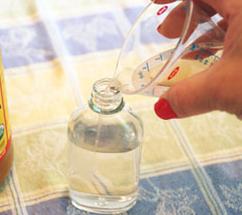
Details on how to make 6 table vinegar
There are a lot of mathematical formulas, using which, you can quickly and easily calculate the amount of drinking water you need to add to get the right concentration (in this case 6%). However, not every hostess wants to equip herself with a calculator and calculate the necessary proportions herself. In this regard, we offer you the already calculated parts, which should be used to obtain the desired seasoning.
Proportions for 6% vinegar
So, how to make vinegar 6 percent? For this, it is necessary to take the raw material in the form of 70%. It should be noted that this product is the most economical. If you use it to make the vinegar the right concentration, you can have one small bottle for many, many months.
So, if you have such an essence in stock, but you do not know how to make 6% of 70% vinegar, then we'll talk about it right now.
To get a less concentrated dining seasoning you will need a measuring unit. As her we decided to use a tablespoon. Filling it with essence, the acid must be poured into a ceramic bowl, and then add to it 11 same spoons of ordinary drinking water (you can cool the boiling water). As a result of mixing these fluids, you get the 6% vinegar you need. 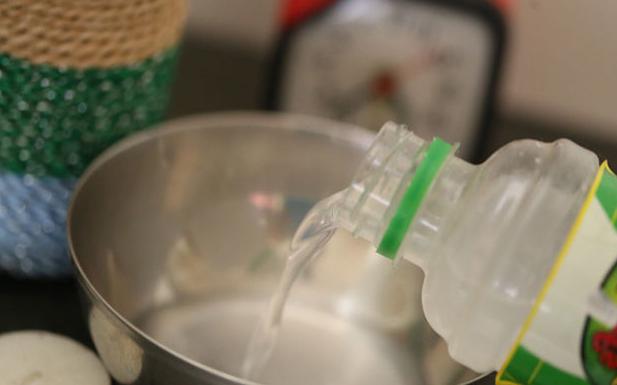
How else can you dissolve 70% of the essence?
It should be noted that the presented essence can be planted not only up to 6% of the fortress. Thus, by observing special proportions, the following concentrations can be easily obtained from it:
- adding 1.5 parts of cooled boiling water you can get 30% table vinegar;
- adding 6 parts of cooled boiling water - 10% table vinegar;
- adding 7 parts of cooled boiling water - 9% table vinegar;
- adding 8 parts of cooled boiling water - 8% table vinegar;
- adding 9 parts of cooled boiling water - 7% table vinegar;
- adding 13 parts of cooled boiling water - 5% table vinegar;
- adding 17 parts of cooled boiling water - 4% - table vinegar;
- adding 22.5 parts of cooled boiling water - 3% table vinegar.
We make 6% table vinegar from 9%
About how to properly dilute 70% of the essence to get the right concentration of seasoning, we described above. But what if you did not find such a product in your kitchen? Then we recommend to make 6% of 9% vinegar. How to carry out the venture? This we will tell right now.
So, we need:
- glass containers;
- measuring cup;
- 9% table vinegar;
- drinking water (cooled boiling water).
The process of breeding
Diluting 9% to 6% of the concentration is much easier and easier than making the necessary solution from the essence. For this, only 30% of ordinary water or cooled boiling water should be added to the feedstock. 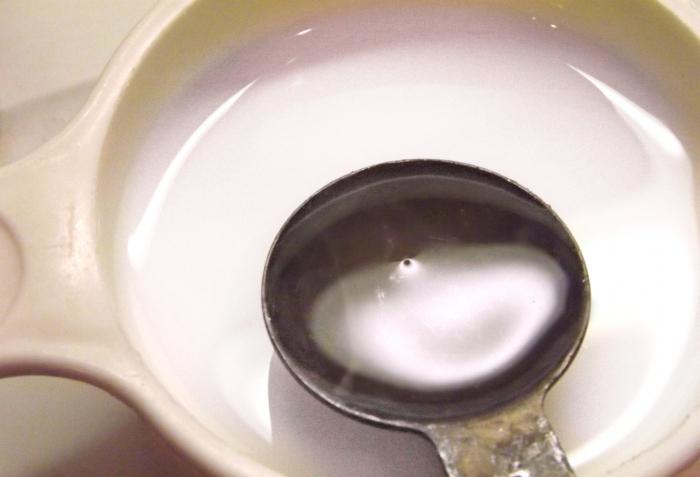
So, if you have one liter of 9% table vinegar available, then you just need to add about 300 ml of pure drinking liquid. If you do not need this a large number of strong seasoning, then the scale can be reduced. For example, to 100 ml of 9% table vinegar add 30 ml of plain water. But to make the right concentration, you should definitely use a measuring cup.



